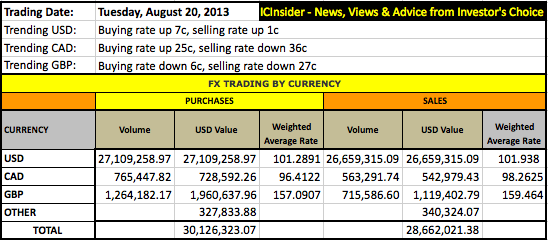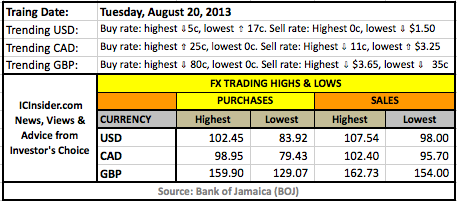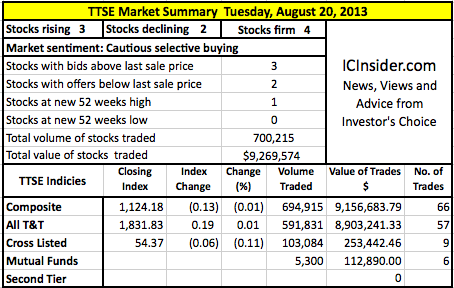Wednesday, 21 August 2013 | Trinidad Cement was once more in strong demand on the Trinidad & Tobago Stock Exchange trading 687,568 shares for a value of $1,340,308 and trading firm at $1.95 Overall Market activity resulted from trading in 13 securities of which 5 advanced, 1 declined and 7 traded firm as 776,230 units traded valued at $2,523,278.
Jamaica Money Market Brokers, which has come in for increased buying following strong first quarter results, traded up to 57 cents an increase of 7 cents with a volume of 30,000 shares valued at $17,100. Another Jamaican company in demand is Scotia Investments with 19,924 shares trading with a value of $40,844; the stock was up 2 cents to close at $2.05. National Enterprises accounted for 10,500 shares valued at $168,000 and traded firm at $16. Neal & Massy traded 2301 shares and gained a cent to close at $58.94, while Prestige Holdings contributed 6,100 units as the price held firm at $9.35, Republic Bank added 1,970 units as the priced held firm at $110.01 and Scotia Bank saw 6,023 units changing hands at a cent lower at $69.99.
 Clico Investment Fund increased by 8 cents to end the day at $21.38 as 3,554 shares valued at $75,972 traded. Guardian Holdings lost, falling $0.40 to close at $15.50, a new 52 weeks low as 2,650 units traded.
Clico Investment Fund increased by 8 cents to end the day at $21.38 as 3,554 shares valued at $75,972 traded. Guardian Holdings lost, falling $0.40 to close at $15.50, a new 52 weeks low as 2,650 units traded.
IC bid-offer Indicator | At the end of trading, the Investor’s Choice bid-offer indicator shows that bids for 4 stocks were higher with 2 stocks having offers lower than their last selling price.














